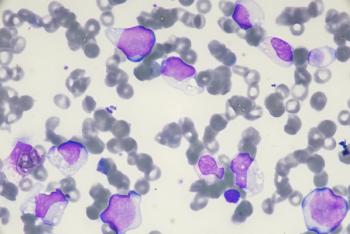
Number of women with metastatic breast cancer rising, as is survival rate
Study highlights the need for services and research for this understudied population.
The number of women in the United States living with distant metastatic breast cancer (MBC) is growing, likely because of an aging population and improvements in treatment, according to a study published online in Cancer Epidemiology, Biomarkers & Prevention.
Researchers came to this finding by estimating the number of U.S. women living with MBC, or breast cancer that has spread to distant sites in the body, including women who were initially diagnosed with metastatic disease, and those who developed MBC after an initial diagnosis at an earlier stage. Researchers also found that median and five-year relative survival for women initially diagnosed with MBC is improving, especially among younger women.
The increasing burden of MBC highlights the importance of documenting recurrence to foster more research into the specific needs of this understudied population, researchers report.
Mariotto
The study was led by Angela Mariotto, PhD, chief of the Data Analytics Branch of the Division of Cancer Control and Population Sciences at the National Cancer Institute (NCI), with coauthors from NCI, the Metastatic Breast Cancer Alliance, and the Fred Hutchinson Cancer Research Center.
“Even though this group of patients with MBC is increasing in size, our findings are favorable,” Mariotto says. “This is because, over time, these women are living longer with MBC. Longer survival with MBC means increased needs for services and research. Our study helps to document this need.”
The study uses population-based data to estimate the prevalence of MBC. Although researchers have been able to estimate the number of women initially diagnosed with MBC, data on the number of women whose cancers spread to a distant organ site, either as a progression or recurrence after being first diagnosed with an earlier stage of breast cancer, has been lacking because U.S. registries do not routinely collect or report data on recurrence.
To develop a more accurate estimate of the total number of women living with MBC, researchers used data from NCI’s Surveillance, Epidemiology, and End Results (SEER) Program to include women who developed MBC after diagnosis. The researchers estimated that, as of Jan. 1, 2017, more than 150,000 women in this country were living with MBC, and that three out of four of them had initially been diagnosed with an earlier stage of breast cancer.
The study shows that despite the poor prognosis of MBC, survival of women initially diagnosed with MBC has been increasing, especially among women diagnosed at younger ages. Researchers estimate a twofold increase in five-year relative survival rate from 18% to 36%, for women initially diagnosed with MBC at age 15 to 49 years between 1992 to 1994 and 2005 to 2012, respectively. The researchers also reported that a small but meaningful number of women live many years after an initial diagnosis of MBC. More than 11% of women diagnosed between 2000 to 2004 under the age of 64 survived 10 years or more.
Based on their calculations, the researchers project that the number of women living with MBC will increase by 31% from 2010 to 2020.
Collecting recurrence data has been challenging for cancer registries because recurrence can be diagnosed through diverse methods and in a variety of locations. To help implement the comprehensive and accurate collection of these data, NCI is funding pilot studies aimed at identifying ways to leverage existing data and informatics methods to efficiently capture information on recurrent disease.
By including women with recurrence, this study provides a more accurate number of women in the U.S. currently living with MBC. This estimation can help with healthcare planning and the ultimate goal of better serving these women, researchers conclude.
Newsletter
Get the latest industry news, event updates, and more from Managed healthcare Executive.






















































